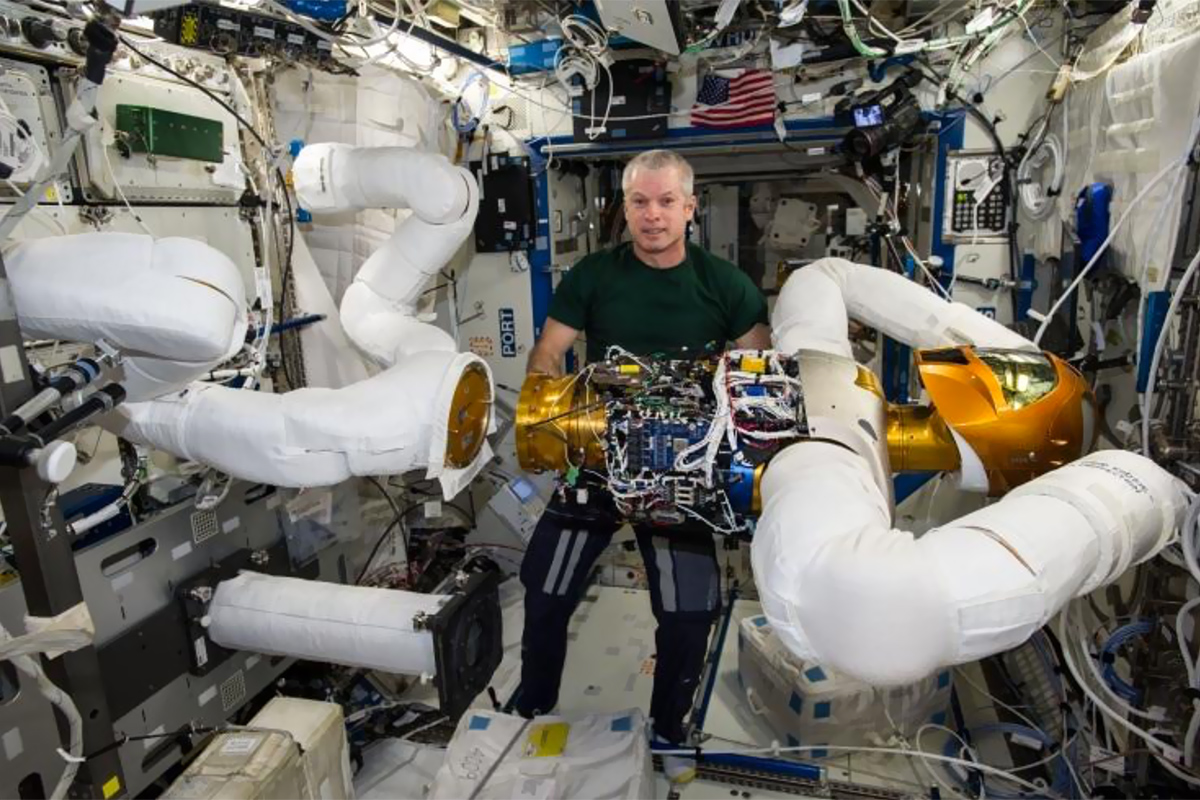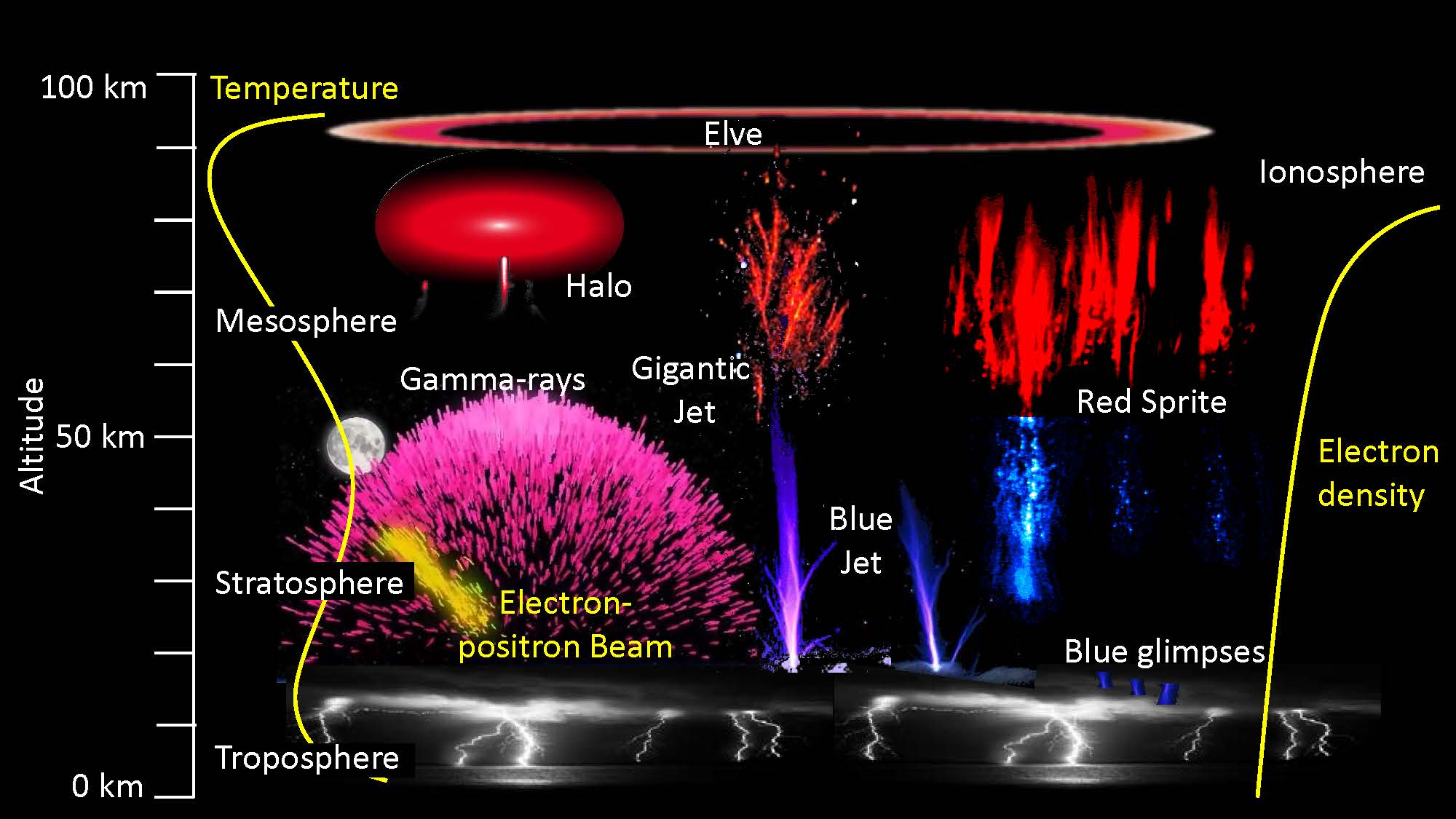SpaceX Is About to Send Tons of Science to Space (and Bring a Robot Home)
A used SpaceX Dragon spacecraft will launch nearly 3 tons (2.7 metric tons) of food, supplies and science gear to the International Space Station (ISS) today (April 2). And before the mission ends, Dragon will bring a glitchy NASA robot home for repairs.
The Dragon space capsule, which last visited the space station in April 2016, is making a return trip on a SpaceX Falcon 9 rocket that has also flown before. The mission is scheduled to launch from Cape Canaveral Air Force Station at 4:30 p.m. EDT (2030 GMT). You can watch the event live here, beginning at 4 p.m. EDT (2000 GMT).
While SpaceX delivery missions for NASA have become common in recent years, not every flight brings back a passenger. For this mission, Dragon will retrieve Robonaut 2, NASA's helper droid for astronauts, which has been on the fritz.
In a televised press conference Sunday (April 1) from NASA's Kennedy Space Center, agency officials said Robonaut 2 — which has been in orbit since 2011 — has been failing for months to power on as expected. After the crew did extensive troubleshooting and sent imagery back to Earth for review, engineers on the ground decided it was best to bring Robonaut 2 back to Earth for repairs. The robot is a test article to throw switches and do simple tasks in orbit, in an eventual effort to reduce astronaut time on basic work in space.
"We believe there is something in the electrical system, some sort of short — something that is not there in the configuration of the Robonaut 2 on board that is in the other configurations on the ground," said Pete Hasbrook, an associate program scientist in the ISS Program Office at NASA's Johnson Space Center in Houston. He added that the repair should be fairly rapid and that Robonaut 2 has the budget to return to space in about a year.
The thrust of the press conference discussed the 5,800 lbs. (2,630 kilograms) of hardware, crew supplies and research equipment that will fly to the orbiting complex. Should the spacecraft lift off on time, Dragon is expected to berth at the space station Wednesday (April 4) after Expedition 55 astronauts grapple the spacecraft using the robotic Canadarm2. Flight engineer and Japanese astronaut Norishige Kanai will perform the operation, backed up by NASA astronaut Scott Tingle, who is also a flight engineer.
Once Dragon is secured, mission controllers in Houston will send ground commands to Canadarm2 to move Dragon to the bottom of the station's Harmony module. Dragon will remain there until the spacecraft is filled up with returning equipment and supplies for re-entry and splashdown in the Atlantic Ocean.
Breaking space news, the latest updates on rocket launches, skywatching events and more!
The span of the scientific work on board goes from fruit flies to plants to human cells to even examining the production of light from living organisms, or autobioluminescence. Scientists plan to exploit this property for metabolic tracking to reduce the time and cost to generate pharmaceutical compounds. In microgravity, the cells will grow more like they do inside of a human. By contrast, cells on a terrestrial petri dish tend to grow on a two-dimensional plane.
"We actually use the light to judge the health of a cell," said principal investigator Dan Close, chief scientific officer of 490 BioTech in Knoxville, Tennessee. Healthy cells glow brightly, sick cells dim, and the light goes out completely in a dead cell, he explained. "Instead of intermittent snapshots of data acquisition, we can continuously monitor any living cell."
SpaceX will also launch the Atmosphere-Space Interactions Monitor, which will monitor severe thunderstorms from an external platform on the ISS Columbus module for at least two years. "Particularly what we're interested in is gigantic lightning shooting up from thunderclouds to the edge of space," said principal investigator Torsten Neubert, of the Technical University of Denmark.
The scientists will also monitor high-energy radiation, called terrestrial gamma-ray flashes, that comes from thunderclouds. "We know a lot about the physics, but we don't know particularly well, for example, how terrestrial gamma-ray flashes are generated," Neubert added.
The famous Veggie experiment — which grew flowers and edible lettuce in space — will get an upgrade through the Veggie Passive Orbital Nutrient Delivery System to improve the uniformity of plant growth, as well as seed generation, according to Howard Levine, chief scientist at Kennedy's Utilization and Life Science Office. The new system will also allow for a greater number of leafier plants or even fruit crops, such as tomatoes, he said.
Other equipment and science experiments launching on Dragon include:
- The Multi-use Variable-g Platform (MVP): This will host as many as a dozen experiment modules for various investigations, which could include samples from plants, protein crystals, cells or living fruit flies. The platform is developed by Techshot Inc.
- The Materials International Space Station Experiment Flight Facility (MISSE-FF): This will be mounted permanently to the outside of the ISS. It will expose components, materials and coatings to outer space for applications ranging from astronaut clothing to product manufacturing. The principal investigators are Alpha Space Test and Research Alliance's Stephanie Murphy and Mark Gittleman.
- Using Brachypodium distachyon to Investigate Monocot Plant Adaptation to Spaceflight (APEX-06): This study will compare the growth of a grass called Brachypodium distachyon with another grass type more commonly studied in space, called Arabidopsis thaliana. Scientists plan to investigate more about the grasses' growth and gene expression. The principal investigator is the University of Wisconsin-Madison's Patrick Masson.
- The Impact of Real Microgravity on the Proliferation of Human Neural Stem Cells and derived-Oligodendrocytes (BioScience-04): This experiment will investigate how stem cells react in microgravity, particularly examining how quickly these cells proliferate and differentiate. The principal investigator is the University of California, Los Angeles' Araceli Espinosa-Jeffrey.
- Does spaceflight alter the virulence of a natural parasite of Drosophila (FFL-03)?: This fruit fly experiment will examine how the organisms respond to pathogens in space. The principal investigator is the City College of the City University of New York's Shubha Govind.
- Microbial Observatory of Pathogenic Viruses, Bacteria and Fungi (ISS-MOP) Project (MT-2): This experiment will catalog the possible types of microorganisms on the ISS that cause disease. The study will look at crew samples as well as environmental samples. The principal investigator is Lawrence Livermore National Laboratory's Crystal Jaing.
- Spaceflight-altered motility activation and fertility-dependent responses in sperm from sea urchin and rodents (Micro-11): This study looks at how microgravity affects the way human and bull sperm swim, as well as other factors in male fertility. The principal investigator is the University of Kansas Medical Center's Joseph Tash.
- Investigating the Physiology and Fitness of an Exoelectrogenic Microorganism Under Microgravity Conditions (Micro-12): This experiment will look at the physical makeup of a microorganism, Shewanella oneidensis MR-1, that can pass electrons through its cell membrane. This process could be used as a means to create electricity from waste organic materials. The principal investigator is NASA Ames Research Center's John Hogan.
- Investigation of the Effects of Microgravity on Controlled Release of Antibiotics and Curing Mechanism of a Novel Wound Dressing: This study is intended to improve wound healing using gels that release antibiotics. Applications range from soldiers in combat to astronauts on long-duration missions. The principal investigator is Tympanogen Inc.'s Elaine Horn-Ranney.
- Gravitational Effects on Distortion in Sintering (of Metal Powders): This experiment will examine how microgravity affects the production of metal powders. The goal is to enhance fabrication and repair in space. The principal investigator is San Diego State University's Randall German.
- MARROW/Bone Marrow Adipose Reaction: Red or White?: This ongoing investigation examines how microgravity affects the production of bone marrow and blood cells within the marrow. This research has applications not only for astronauts, but also for people on Earth who have bone conditions. The principal investigator is Guy Trudel of the University of Ottawa and the Ottawa Hospital Research Institute in Canada.
Dragon's first cargo-demonstration flight to the ISS took place in May 2012. Both SpaceX's Dragon and Orbital ATK's Antares spacecraft provide cargo services to the ISS today, every few months. Unlike Antares, however, Dragon has a pressurized section that allows for delicate experiments and organisms to survive re-entry to Earth.
SpaceX's current cargo contract with NASA includes up to 20 robotic supply flights. NASA initially agreed to pay $1.6 billion for 12 SpaceX delivery flights but later extended the contract to include more missions. The company is also developing a human-rated Dragon spacecraft to ferry astronauts to the ISS; flight tests for that craft are expected no earlier than late 2018.
In 2016, NASA selected SpaceX, Orbital ATK and Sierra Nevada's Dream Chaser for a fresh round of ISS cargo-supply flights scheduled between 2019 and 2024. The maximum potential total value of these newer contracts is up to $14 billion, depending on what combination of flights NASA selects.
Follow us @Spacedotcom, Facebook and Google+. Original article on Space.com.

Elizabeth Howell (she/her), Ph.D., was a staff writer in the spaceflight channel between 2022 and 2024 specializing in Canadian space news. She was contributing writer for Space.com for 10 years from 2012 to 2024. Elizabeth's reporting includes multiple exclusives with the White House, leading world coverage about a lost-and-found space tomato on the International Space Station, witnessing five human spaceflight launches on two continents, flying parabolic, working inside a spacesuit, and participating in a simulated Mars mission. Her latest book, "Why Am I Taller?" (ECW Press, 2022) is co-written with astronaut Dave Williams.



